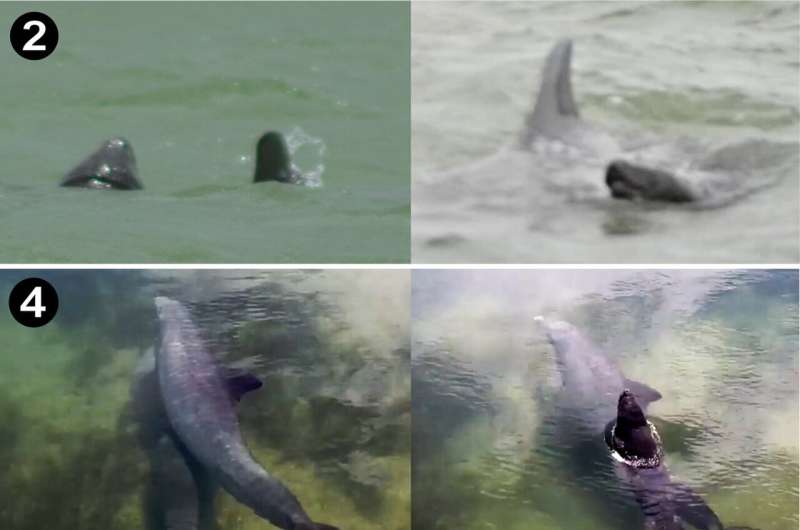January 23, 2024 report
This article has been reviewed according to Science X's editorial process and policies. Editors have highlighted the following attributes while ensuring the content's credibility:
fact-checked
peer-reviewed publication
trusted source
proofread
Bottlenose dolphins observed attacking manatee calves

An international team of marine scientists has observed multiple instances of bottlenose dolphins attacking manatee calves over many years. In their paper published in the open-access journal PLOS ONE, the group describes the behavior they observed and suggest possible explanations for what they describe as antagonistic interactions between dolphins and young manatee.
Prior research has shown that bottlenose dolphins can be aggressive both with other dolphins and with members of other species, particularly other types of dolphins. In this new effort, the research team observed bottlenose dolphins attempting to separate manatee calves from their mothers and biting them on multiple occasions.
Manatees are aquatic mammals that look somewhat like oversize seals. They typically live in shallow water and because of their docile behavior, are sometimes known as sea cows. They are also vegetarian and survive by eating seaweed.
They do not have claws or sharp teeth, which makes them vulnerable to attack by other marine predators such as orca, sharks, alligators and crocodiles—their only real means of defense is to live in shallow water where whales and sharks cannot get to them and to swim away if they see a crocodile or alligator approaching. The bottlenose dolphin does not feed on manatees, which is why the researchers were surprised to see them attacking calves.
The research team has been studying bottlenose dolphin off the coast of Belize for approximately 21 years, and over that period, they observed 10 attacks on manatee calves. The form of attack varied from simple harassment to ramming and biting. In all cases, the dolphins initiated the attack. The team also found instances of bite marks from dolphins on orphaned calves.
The research team was not able to find any reason for the attacks; the dolphins were not attempting to eat the manatees—their behavior suggested they were more interested in simply harassing the young creatures. They do suggest that it is possible that dolphins see manatees as competition for food or other resources. They conclude that the behavior is common, and therefore puts the manatee at risk as they are a threatened species.
More information: Eric A. Ramos et al, Agonistic interactions initiated by adult bottlenose dolphins on Antillean manatee calves in the Caribbean Sea, PLOS ONE (2024). DOI: 10.1371/journal.pone.0295739
Journal information: PLoS ONE
© 2024 Science X Network




















